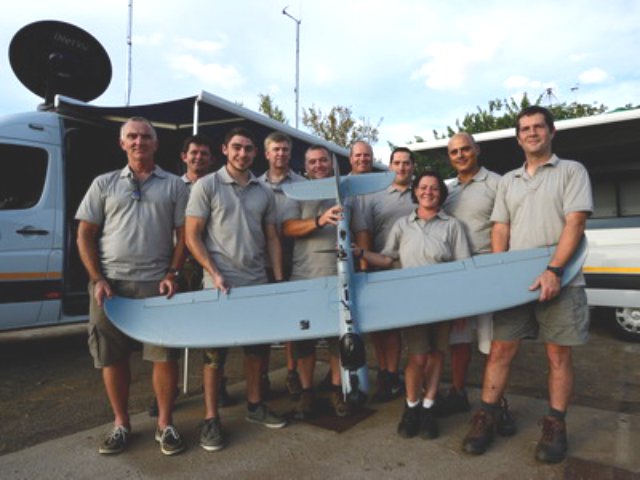The Kruger National Park (KNP) is no longer using unmanned aerial vehicles (UAVs) to combat poaching, after a year-long evaluation period exposed a number of shortcomings, but is using other aviation assets successfully.
Thumelo Matjekame, special projects manager at SANParks and the man in charge of counter-poaching activity, said that UAVs were tested as an experiment in the Kruger National Park but were not successful. This was largely as a result of the payload on the aircraft – due to their small size and weight, they are not able to carry sophisticated payloads and as a result did not detect any suspected poachers during the trial period.
Even using thermal imaging payloads, the UAVs struggled to track humans in the park, since their thermal signature can be similar to many animals and even some trees.
According to Mark McGill, technical operations manager at SANParks, the UAV test period was “very disappointing” as no poachers were seen and none apprehended. He said that UAVs need a lot of further development before they can be useful. This sentiment was echoed by Matjekame, who said SANParks has not ruled out using UAVs in the future – if UAVs can improve their capabilities and meet requirements, they will be considered again.
The Kruger National Park began using UAVs in early 2015, notably via South African company UAV and Drone Solutions (UDS), which tested around ten different UAVs, both battery and petrol powered, and fixed wing and multi-rotor. The fixed wing aircraft had wingspans ranging from 2.1 metres to 3.1 metres.
The Council for Scientific and Industrial Research (CSIR), which supported the UAV deployments in Kruger and other South African parks, last year said unmanned aircraft can function as a “remarkable support tool” in anti-poaching operations.
In addition to UAVs, SANParks has experimented with various aviation assets in the Kruger, including powered paragliders. McGill said that although they provide the needed fast reaction times, they are slow and take some time to get to where they need to go. Powered paragliders, or paramotors, typically fly at around 60 km/h whereas helicopters can do in excess of 200 km/h.
Although no longer using UAVs, the Kruger National Park every day calls on a fleet of fixed and rotary winged aircraft to support its rangers. According to McGill the Kruger has four Squirrel helicopters and two fixed wing Cessna aircraft as well as four Bat Hawk/Bantam ultralight aircraft. Two of the Squirrels were acquired with money donated by the Howard G Buffet Foundation, while the other two are older models. The most recent one was delivered in March 2015 and configured for night flying.
The Park’s aircraft are mainly used for anti-poaching and, according to McGill, the aircraft are being used on a daily basis to good effect.
Adding substantially to Kruger’s aircraft fleet is a Bell 206 Jet Ranger flown by Flying for Freedom South Africa, a non-profit company that assists the park with animal-related needs. Much of the flying is done to bring in forensic teams to rhino kill sites.
Pilot ‘Tokkie’ Botes said he is the only pilot to fly privately for Kruger and said he has seen 1 600 dead rhinos in the last three years and 500 hours of flying in the Park. However, not all rhino deaths are due to poaching – the recent drought, for instance, has seen an increase in mortality.
Major General (Ret) Johan Jooste, head of special projects for SANParks in December last year said the hours of flying the park “made the proverbial difference. Through your contribution we could get up to date and stay on top of crime scene management.”
In future, the Kruger National Park may benefit from an additional helicopter through the Rhino 911 non-profit initiative. This uses a Bell 407GT fitted with a forward-looking infrared sensor and high resolution camera to spot rhinos and poachers, allowing critical night operations. Rhino 911 was launched in September 2015.
Source: Defence Web


Very Disappointing news, since this was heralded as a classic case for quite a while now. We will have to see if payload and technology improve enough to give the park what they need.